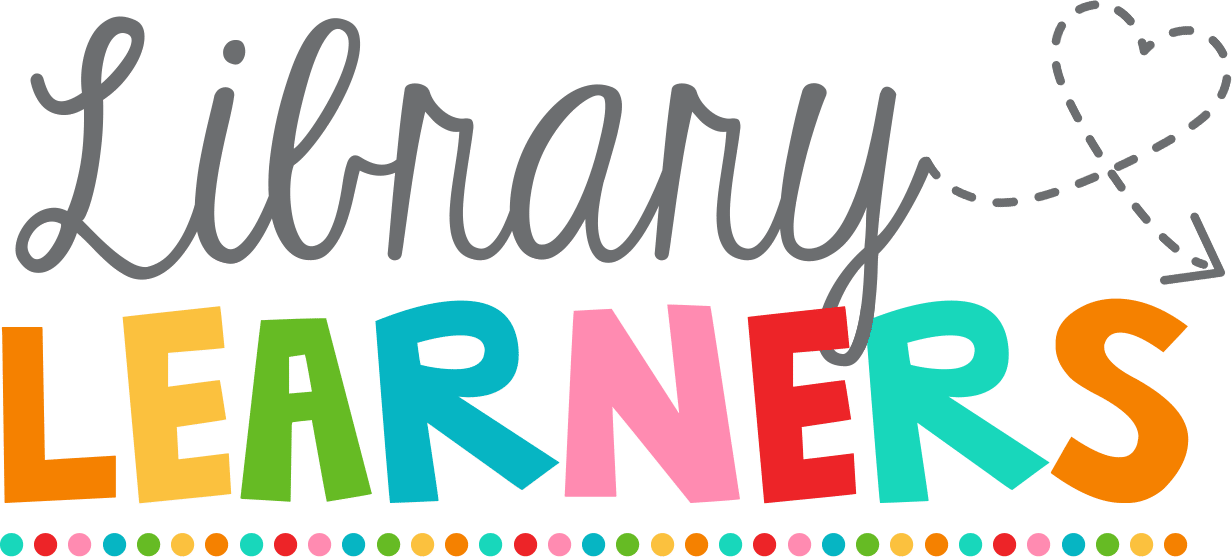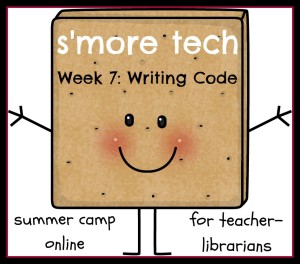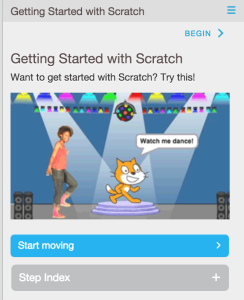Coding in Your School Library: SMore Tech Week 7
Hi friends!
The longer title for this blog post is “How to Teach Your Students to Code, Without Having to Become a Coding Genius Yourself.” Although I do know some code, from working on this blog, I am by no means an expert. I will not let my lack of knowledge hinder my elementary students, who need to know this twenty-first century skill! Not only will they need to code for their future careers, but teaching computer science provides thinking skills, like creative expression and problem solving.
I will give you four easy-peasy steps that you can(easily) take to get more code into your school library!
1. Add a Code folder to your library iPads
Even if you only have one iPad in the library, create this folder, and let students use these apps.
Here are the apps I’ve included in our Code folder: code.org, Daisy the Dino, Hopscotch, Bee-Bot, Kodable, and Tynker.
For Code.org, I add a link to the coding challenges to the iPad home screen. Those coding challenges are here: https://studio.code.org/ (This is a website link, not an app from the app store.) And here is how to add a favorite link to the iPad home screen.
You can check out video overviews for each of these coding apps.
Bee-bot (floor robot not required)
Kodable (works for kindergarten–no reading required)
Tynker (Even though the video talks about a Kickstarter campaign, those features have already been released on the app.)
After you download these free apps from the app store, you’ll put them together in a folder. Do you know how to create a folder to organize your iPad apps? If not, check out this 30-second video.
That was easy, right?
2. Add Kids Coding Websites to your Library Resources Page
The only coding link I have on my Library Resources page is a link to these challenges on code.org.
Code Monster is another free website, no login required, that teaches coding step by step.
Scratch, from MIT, is free, but does require a login. Projects can be saved and shared. Because of this feature, Scratch requires closer supervision. Other users may have shared inappropriate content. Here’s a digital citizenship learning opportunity: read the community guidelines and report violations. There are plenty of tutorials to guide your students through the creation process.
Once you add these resources, your students can work on a coding project after they’ve checked out a library book. Or students who finish classroom work quickly can use a computer in the classroom or library to continue work on a coding project. You’ve equipped students to teach themselves!
3. Send Home Coding Bookmarks
This has got to be the easiest way to encourage coding.
Print these bookmarks (free printables in my Teachers Pay Teachers store). Cut them apart.
Send them home. Students can learn code on the computers and devices they have at home.
4. Participate in the Hour of Code
The official website is not yet set up for 2015. It should take place in December, and I will definitely update you when I get official word on this!
In the meantime, you can use the wealth of resources on the Code.org website, everything from inspirational videos and posters, coding challenges (that look like games), to a 20-lesson K-5 curriculum. Here’s a sample video.
You can participate in the official worldwide Hour of Code, or create your own variation. Last year, I paired classes of older and younger students, and they worked on the coding challenges together. It took a week to give everyone an hour of code, but it was well worth it. I blogged about it here.
Your Suggestions?
How have you taught your students to code? What worked? Please share your ideas and experiences on our Week 7 Padlet.





I just wanted to say that I saw you blog post last year about the Hour of Code. We participated and some of the kids were so excited that we formed an afterschool coding club. This year are participating and were chosen as the $10,000 technology winners for Tennessee!!!
Thanks so much for your blog and information. It has really helped me improve as a librarian.